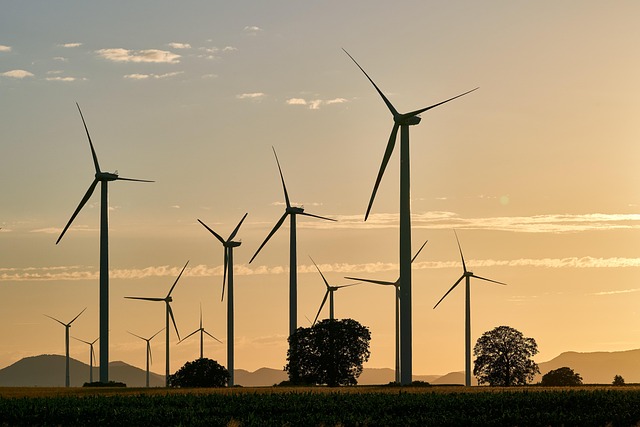From Fossil Fuels to Green Energy: Navigating the Investment Shift
The transition from fossil fuels to green energy has become one of the most significant undertakings of the 21st century. This shift is not merely a trend; it represents a fundamental change in how energy is produced, consumed, and invested in across the globe. As the effects of climate change become more apparent, there is an urgent need to reassess energy sources and move toward sustainable alternatives. This article aims to explore the complexities involved in this transition, its implications on investments, and the future landscape of energy production.
The Current Energy Landscape
As of 2023, fossil fuels account for a substantial portion of the world’s energy supply. Oil, coal, and natural gas continue to dominate the energy sector, providing around 80% of global energy consumption. This reliance has been deeply entrenched due to the historical advancements in technology and infrastructure centered around these sources. Yet, the environmental repercussions have led to increasing scrutiny and calls for change.
Why the Shift is Necessary
Climate change is no longer a distant threat but a current reality that affects weather patterns, sea levels, and biodiversity. The burning of fossil fuels has been identified as a leading contributor to greenhouse gas emissions, which trap heat in the atmosphere. The scientific consensus on climate change is overwhelming, prompting governments, organizations, and individuals to take action toward reducing carbon footprints.
This necessitates a shift toward green energy sources such as solar, wind, hydroelectric, and geothermal power. These renewable sources offer sustainable alternatives that are not only abundant but also mitigate the long-term impacts of climate change. Transitioning to greener energy will help reduce dependency on finite fossil fuel resources while fostering energy security and economic stability.
Investment Trends in Green Energy
Given the pressing need to transition to sustainable energy, the investment landscape is witnessing a dramatic shift. Investors are increasingly steering their funds away from fossil fuels and toward renewable energy initiatives. This transition is driven by numerous factors, including:
- Government Policies: Many governments are implementing stringent regulations against fossil fuel use while providing incentives for renewable energy projects.
- Corporate Responsibility: Companies are adopting Corporate Social Responsibility (CSR) policies that emphasize sustainability, prompting many to shift investments toward greener initiatives.
- Market Demand: Consumers are now more inclined to support brands that prioritize sustainability, thereby affecting companies’ investment choices.
- Technological Advancements: Innovations in technology are making renewable energy more efficient and cost-effective, attracting investors.
- Financial Returns: Green energy investments are increasingly yielding positive returns, demonstrating that sustainability and profitability can go hand in hand.
Challenges in Transitioning Investments
While the shift toward green energy investments is gaining momentum, it is not without challenges. The transition is complex and multifaceted, encompassing various economic, social, and technical obstacles:
One of the primary challenges lies in the established infrastructure built around fossil fuel production. Transitioning energy systems requires significant investments in new technologies and infrastructure, which can be prohibitively expensive. Moreover, many energy companies have substantial financial commitments tied to fossil fuel assets, making it difficult to pivot without incurring losses.
Another challenge is the fluctuating price of fossil fuels. When fossil fuel prices drop, the economic incentive to invest in renewable energy sources may diminish. This has led to skepticism among investors, who may prefer the perceived security offered by fossil fuel investments.
Lastly, the skill gap presents another significant barrier. Transitioning to renewable energy systems may require a workforce skilled in different technologies and methodologies, necessitating training and education programs that are often time-consuming and costly.
The Role of Financial Instruments in Transition
Several financial instruments and strategies are emerging to support the transition to green energy. Green bonds, for example, are becoming increasingly popular as a way for organizations to raise capital for environmentally-friendly projects. These bonds provide an avenue for investors to contribute to sustainable practices while receiving standardized financial returns.
Environmental, Social, and Governance (ESG) investing is also gaining traction. This approach evaluates investments based not just on financial returns but also on their societal and environmental impact. As a result, many institutional investors are incorporating ESG criteria into their decision-making processes, leading to increased capital flowing into green energy projects.
Additionally, public-private partnerships are emerging as viable models to help scale up renewable energy investments. By leveraging public funds combined with private sector expertise, these partnerships can accelerate innovation and reduce the financial burden on governments.
Future Prospects of Green Energy Investments
The future of energy investments appears optimistic, particularly for renewables. As technology advances and costs continue to decline, renewable energy sources are increasingly becoming competitive with fossil fuels. For instance, the cost of solar and wind energy has dropped significantly, making them attractive options for utility providers and other consumers.
Moreover, global commitments to the Paris Agreement and net-zero emissions goals are driving further investment into green technologies. Governments and organizations are ramping up efforts to reduce their carbon footprints, which will likely accelerate the growth of green energy markets.
As consumer awareness of climate issues grows, demand for clean energy solutions will continue to increase. This evolving landscape will undoubtedly present new opportunities for businesses focused on sustainable practices, creating further incentive for investors to pivot toward green energy.
Conclusion
The transition from fossil fuels to green energy represents more than just a change in energy sources; it signifies a shift in our collective consciousness regarding sustainability and environmental responsibility. While challenges remain, the growing momentum toward investing in renewable energies is hard to ignore. As technology continues to innovate, and as societal and governmental pressures intensify, the landscape of energy investments will inevitably tilt towards sustainability.
In navigating this investment shift, stakeholders—including governments, businesses, and individual investors—must remain committed to embracing change and reevaluating their priorities. By doing so, they will not only contribute to a healthier planet but also position themselves to prosper in the evolving energy market of the future.


